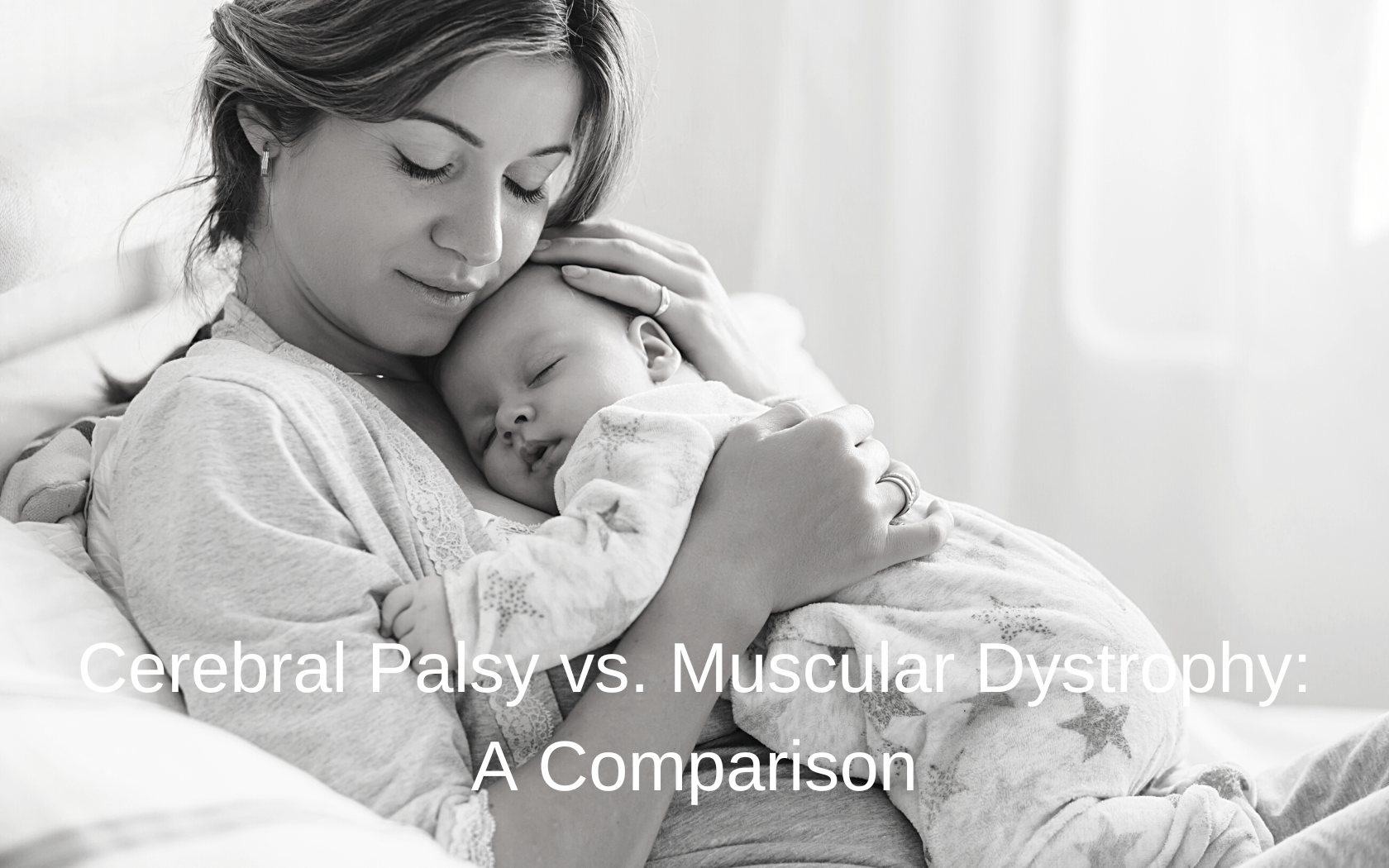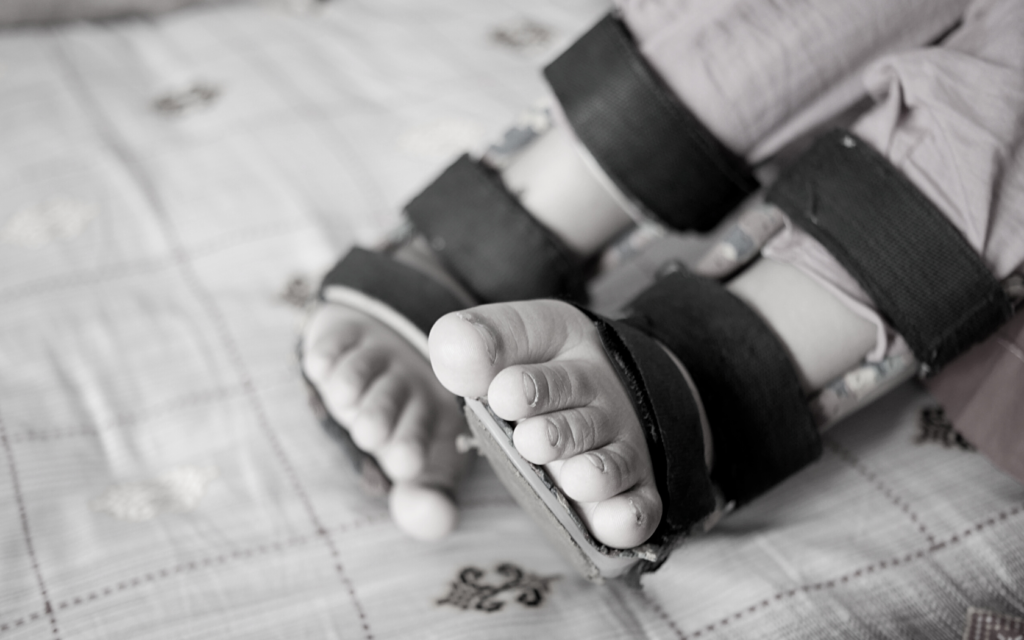Cerebral palsy and muscular dystrophy are both disorders that affect muscle function. So it can be easy to confuse them. But are there two sides to the same coin? Not at all. It’s important to know the differences, which we’ll outline for you below. So keep reading to learn more about the differences between cerebral palsy vs muscular dystrophy.

Cerebral Palsy vs Muscular Dystrophy: Key Differences
It’s true that cerebral palsy (CP) and muscular dystrophy (MD) are similar in a few ways. For example:
- They share some symptoms (like difficulty with muscle control)
- They’re often diagnosed during childhood
- They’re both incurable conditions
The main difference is the cause. Cerebral palsy is associated with brain damage. Muscular dystrophy is a group of genetic disorders affecting muscle structure and function.
Other key differences of cerebral palsy vs muscular dystrophy include:
- They have different patterns of muscle involvement
- MD is progressive, but CP is non-progressive.
- CP sometimes affects cognitive function, but most forms of MD don’t.
Cerebral Palsy vs Muscular Dystrophy: Causes
Now let’s dive deeper into what causes these two conditions. The cause of CP is damage to the developing brain, often occurring before or during birth. Examples of factors that can lead to CP include:
- Infections
- Lack of oxygen
- Brain injury
Did you know that some cases of cerebral palsy are the result of a physician’s mistake? For example, sometimes doctors fail to monitor and respond to signs of fetal distress promptly. This can lead to birth asphyxia, causing brain damage and CP.
Another example is when a doctor misuses forceps or vacuum extraction during delivery. Improper use of these tools can cause head trauma that leads to CP.
On the other hand, muscular dystrophy is caused by mutations in genes responsible for the structure and function of muscles. Different types of MD have different genetic causes.

Cerebral Palsy vs Muscular Dystrophy: Symptoms
Cerebral palsy primarily affects motor skills and posture. Symptoms may include:
- Stiff muscles
- Involuntary, uncontrolled movements
- Trouble walking
- Cognitive delays
- Difficulty completing tasks that involve fine motor movement
- Difficulty eating
- Muscle weakness
Instead of stemming from a brain issue, muscular dystrophy has a direct impact on the muscles themselves. It’s characterized by muscle degeneration and weakness. This weakness can affect various muscle groups. Symptoms of MD may include:
- Difficulty walking
- Muscle pain
- Muscle weakness
- Growth delays
- Breathing troubles
Most forms of MD don’t affect cognitive function. People with MD usually have normal intelligence.
CP and MP share some symptoms. So how can you tell if it’s cerebral palsy vs muscular dystrophy? If you suspect your child has one of these conditions, speak with your doctor. They will make a diagnosis not just from apparent symptoms, but from the results of a variety of tests.
Cerebral Palsy vs Muscular Dystrophy: Onset and Progression
Symptoms of CP usually appear early in life. Often, children with this condition receive a diagnosis before the age of 2 or 3. It’s devastating news for parents to find out that their child has a lifelong condition because of a brain injury.
But here’s some good news: the brain damage that causes CP is non-progressive. That means the disorder won’t get worse over time. However, the physical manifestations of the condition can change over time.
Like CP, muscular dystrophy often shows up in early childhood. However, onset can also occur in adolescence or even adulthood, depending on the type of MD. And unlike CP, MD is progressive. This means that symptoms do worsen over time.

What’s the Prognosis of Cerebral Palsy vs Muscular Dystrophy?
Two of the biggest questions parents have when receiving a diagnosis for their child are “How long will my child live? What will their life be like?”
No one can foretell someone’s lifespan. But here’s what we can tell you about the general prognosis for these two conditions:
Prognosis for Muscular Dystrophy
The lifespan of people with MD depends on the type and severity of the condition. Some types of MD progress quickly.
For Duchenne muscular dystrophy, the most common type, the life expectancy is 16 to early 20s. People with Becker MD live to their 30s and 40s. Some types of MD, like distal, tibial, and OPMD don’t affect life expectancy much.
Prognosis for Cerebral Palsy
Cerebral palsy itself doesn’t affect life expectancy. However, people with CP may face health challenges that can impact their quality of life. For example, they can have mild to severe motor impairments, depending on the severity of their brain injury.
Some might walk independently and have no trouble with daily tasks. Others might depend on crutches or wheelchairs. But treatment and therapy can maximize an individual’s potential.
If you believe your child has cerebral palsy or muscular dystrophy, speak to your doctor right away. Do you suspect negligence is to blame for your child’s CP? If so, we invite you to contact our lawyers here.




